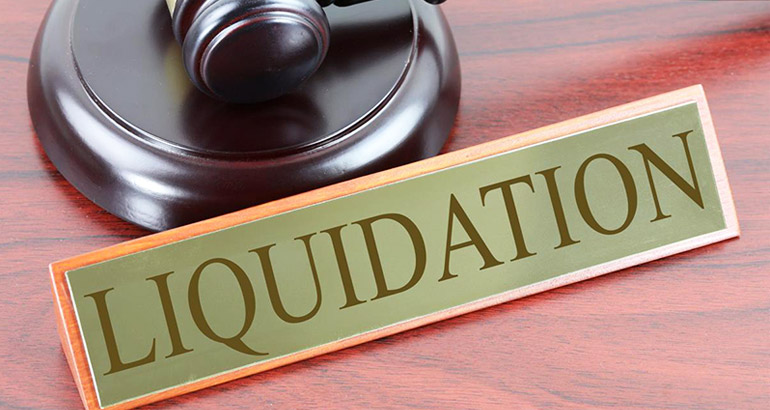Company Liquidation - An Overview
Facts About Company Liquidation Uncovered
Table of ContentsThe 15-Second Trick For Company LiquidationThe Of Company LiquidationThe Only Guide for Company LiquidationCompany Liquidation Can Be Fun For AnyoneSome Known Details About Company Liquidation
Date Released: 22/05/2024When a firm goes right into liquidation its possessions are offered to pay off lenders and business folds. The company name remains survive Firms Home but its status switches over to 'Liquidation'. The elimination of the name only comes about on dissolution which is approximately 3 months after the closure of the liquidation (Company Liquidation).The assigned liquidator deals with part of lenders all at once instead of business directors, and their major function is to collect in and become aware all service assets. Investors vote on whether to pass a 'winding-up resolution' and place the business into volunteer liquidationThe winding-up resolution is sent to Companies Home within 15 days of the investor voteA notice must likewise be placed in the Gazette within 14 daysAssets are know, and funds distributed amongst creditor groups, according to the legal pecking order of repaymentThe conduct of supervisors leading up to the insolvency is explored as an examples of wrongful or prohibited trading.
Because it is a solvent liquidation procedure, creditors are paid off completely, and a Statement of Solvency have to be signed by the bulk of supervisors vouching for the reality that this will be possible. No greater than 5 weeks later, shareholders pass the resolution needed to wind-up the firm, and appoint an accredited IP to carry out the processA notice is put in the Gazette within 2 week of the resolution being passed, and the authorized Declaration of Solvency needs to be sent out to Firms House within 15 days As we have pointed out, the assigned liquidator will certainly become aware company possessions and make circulations to financial institutions.
We use some important cookies to make this web site work. We wish to establish added cookies to recognize exactly how you utilize GOV.UK, remember your settings and improve government solutions. We also make use of cookies set by various other sites to assist us supply content from their services. You have accepted additional cookies.
Some Known Details About Company Liquidation
We use some crucial cookies to make this web site work. We would love to establish extra cookies to understand just how you use GOV.UK, remember your setups and improve federal government solutions. We also utilize cookies set by other websites to help us supply content from their services. You have actually accepted extra cookies.
Liquidation in money and economics is the process of bringing a service to an end and dispersing its assets to plaintiffs. It is an occasion that usually happens when a firm is insolvent, implying it can not pay anonymous its responsibilities when they schedule. As firm operations end, the staying possessions are made use of to pay creditors and shareholders, based on the concern of their cases.
The term liquidation might additionally be used to refer to the selling of poor-performing goods at a price less than the cost to the company or at a cost less than the company wishes. The term liquidation in financing and economics is the process of bringing a company to an end and distributing its assets to complaintants.
Liquidation generally happens during the bankruptcy procedure under Chapter 7. Liquidation can also refer to the procedure of offering off inventory, generally at high discounts.
The Facts About Company Liquidation Revealed
Properties are distributed based upon the concern of different events' cases, with a trustee designated by the U.S. Division of Justice looking after the procedure. The most senior claims come from secured creditors that have collateral on loans to business. These lenders will take the collateral and sell itoften at a substantial discount, due to the brief time frameworks involved.
Next in line are unsafe creditors. Shareholders receive any kind of continuing to be assets, in the not likely occasion that there are any kind of.
It is not essential to file for personal bankruptcy to liquidate supply. Liquidation can likewise refer to the act of leaving a safety and securities click this site position. In go the most basic terms, this means marketing the position for money; an additional approach is to take an equal but opposite position in the exact same securityfor instance, by shorting the very same variety of shares that compose a lengthy setting in a supply.
Company Liquidation Fundamentals Explained
Company ABC has actually been in organization for one decade and has actually been producing revenues throughout its run. In the last year, nonetheless, the company has battled monetarily as a result of a slump in the economic climate. It has actually reached a point where ABC can no more pay any one of its debts or cover any of its costs, such as settlements to its vendors.

Occasionally, the firm discontinues operations totally and is deregistered. The possessions are marketed to repay various claimants, such as creditors and investors. Not all properties will certainly offer at 100% of their value, so the service and bankruptcy courts will identify an estimated recuperation value of the residential property to distribute to lenders.
The 5-Minute Rule for Company Liquidation

The sale of possessions is used to pay financial institutions and shareholders in the order of top priority. Liquidation is additionally utilized to refer to the act of exiting a safety and securities setting, usually by offering the placement for cash.